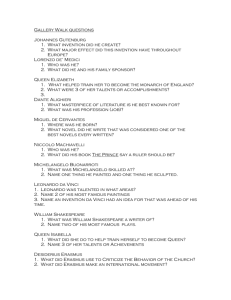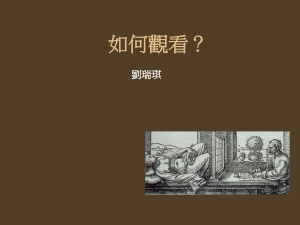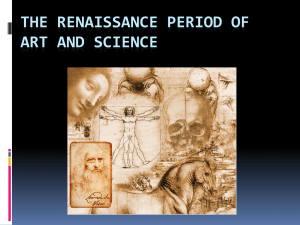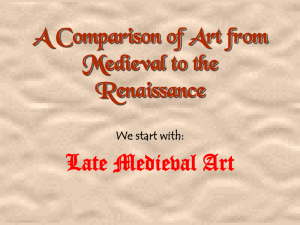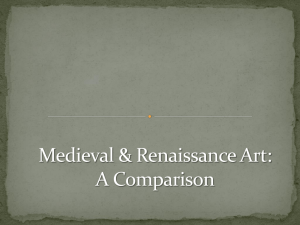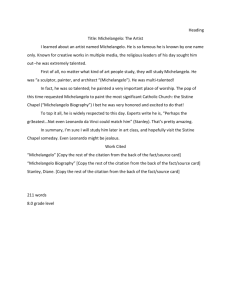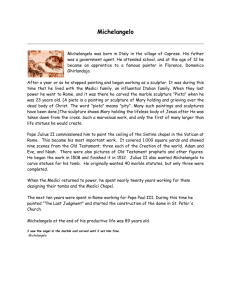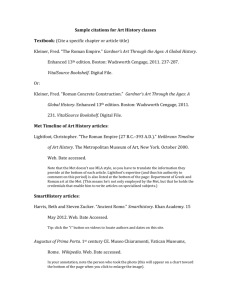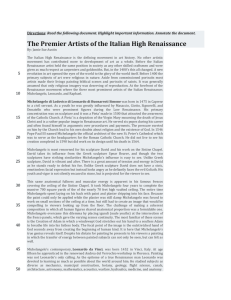Leonardo da Vinci. Virgin of the Rocks, c. 1485, oil on wood
advertisement
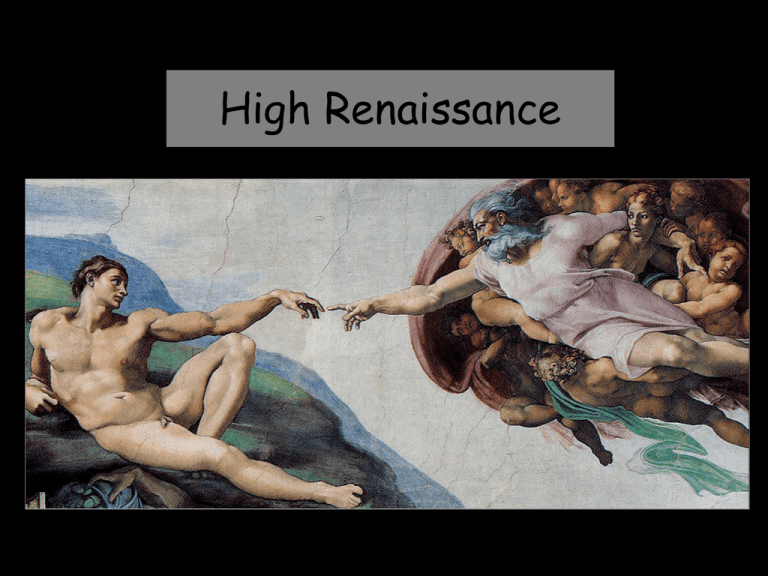
High Renaissance Leonardo da Vinci. Virgin of the Rocks, c. 1485, oil on wood Leonardo da Vinci/ the “Renaissance” man/ pyramidal configuration/ interlocking gestures/ chiaroscuro and sfumato/ atmospheric perspective Leonardo da Vinci. Cartoon for the Virgin and Child with St. Anne and the Infant St. John, 1498, charcoal heightened with white on brown paper cartoon/ stable without being static Leonardo da Vinci. Embryo in the Womb, c. 1510, pen and ink on paper Leonardo da Vinci. Anatomical Studies (larynx and leg), 1510, pen, brown ink and wash over black chalk on paper Leonardo da Vinci. Last Supper from the refectory of Santa Maria delle Grazie (Milan), c. 1495-98, fresco (oil and tempera on plaster) depiction of a dramatic movement/ groupings of disciples/ Judas Iscariot/ isolation of Christ/ use of linear perspective/ poor condition of the work Leonardo da Vinci. Mona Lisa, c. 1503-1505, oil on wood “the world’s most famous painting”/ sfumato combined with warm flesh tones/ potential of the use of oil paint revealed/ use of ambiguity and mystery/ sprezzatura Left: Leonardo da Vinci. Vitruvian Man, c. 14851490, pen and ink Below: Leonardo da Vinci. Study for the monument to Francesco Sforza, c. 1488-1490 Donato D’Angelo Bramante. Tempietto (Rome), 1502 Bramante/ the location of St. Peter’s crucifixion/ emphasis on architectural mass vs. flat, linear planes/ elevated from its surroundings/ harmonious proportions of the drum, dome, and the base/ use of the Doric order Michelangelo Buonarroti. Pieta, 1498-1500, marble Michelangelo Buonarroti/ faithful adherence to “rules” resisted/ terribilita/ pieta emphasizing beauty, not horror/ agelessness of Mary/ altered proportion and scale/ signature of the artist/ a tree stump Michelangelo Buonarroti. David, 15011504, marble the “Giant”/ compositionally and emotionally connected to an unseen presence/ pent-up passion vs. classical calm/ reinterpretation of classical antiquity/ emphasis on the hands Michelangelo Buonarroti. Moses (San Pietro in Vincoli, Rome), c. 1513-1515, marble Michelangelo’s tomb for Julius II/ expression of wrath building up/ a head with horns Right: Michelangelo Buonarroti. Bound Slave, 1513-1516, marble Left: Michelangelo Buonarroti. Dying Slave, c. 1513, marble liberating the figure from a block of stone/ references to a tortured soul/ influence of the Laocoon group Michelangelo Buonarroti. Ceiling of the Sistine Chapel (Vatican City, Rome), 1508-12, fresco Plan of the Sistine Ceiling Humanistic interpretation of the story of Creation
